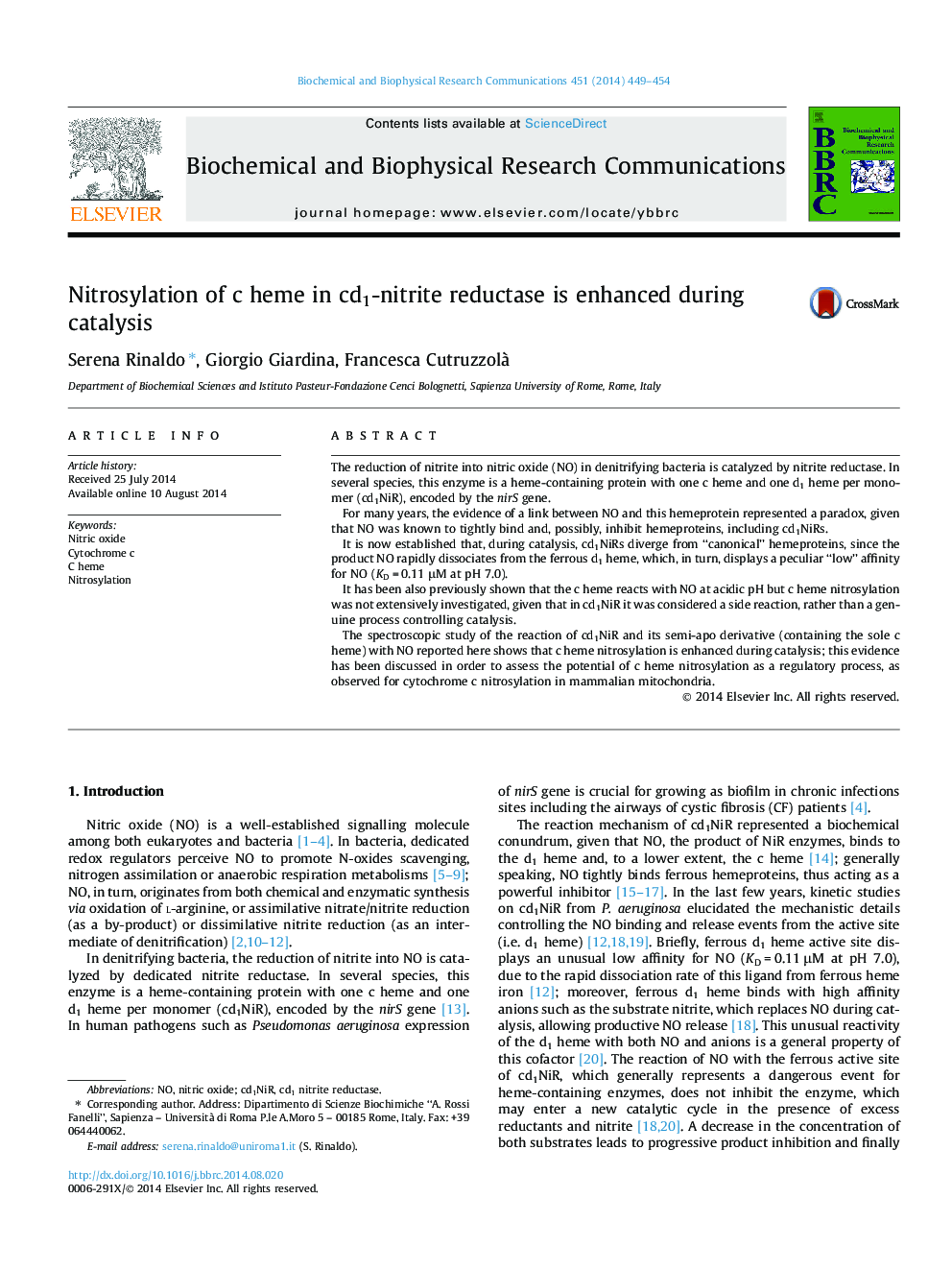| Article ID | Journal | Published Year | Pages | File Type |
|---|---|---|---|---|
| 1928394 | Biochemical and Biophysical Research Communications | 2014 | 6 Pages |
•C heme nitrosylation is enhanced by nitrite reduction catalysis.•We analyze the nitrosylation of the c heme of the semiApo NiR.•We analyze the nitrosylation of both the c and the d1 hemes of the holo cd1NiR.
The reduction of nitrite into nitric oxide (NO) in denitrifying bacteria is catalyzed by nitrite reductase. In several species, this enzyme is a heme-containing protein with one c heme and one d1 heme per monomer (cd1NiR), encoded by the nirS gene.For many years, the evidence of a link between NO and this hemeprotein represented a paradox, given that NO was known to tightly bind and, possibly, inhibit hemeproteins, including cd1NiRs.It is now established that, during catalysis, cd1NiRs diverge from “canonical” hemeproteins, since the product NO rapidly dissociates from the ferrous d1 heme, which, in turn, displays a peculiar “low” affinity for NO (KD = 0.11 μM at pH 7.0).It has been also previously shown that the c heme reacts with NO at acidic pH but c heme nitrosylation was not extensively investigated, given that in cd1NiR it was considered a side reaction, rather than a genuine process controlling catalysis.The spectroscopic study of the reaction of cd1NiR and its semi-apo derivative (containing the sole c heme) with NO reported here shows that c heme nitrosylation is enhanced during catalysis; this evidence has been discussed in order to assess the potential of c heme nitrosylation as a regulatory process, as observed for cytochrome c nitrosylation in mammalian mitochondria.
